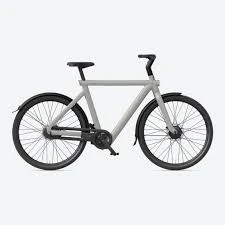
- Afrikaans
- Albanian
- Amharic
- Arabic
- Armenian
- Azerbaijani
- Basque
- Belarusian
- Bengali
- Bosnian
- Bulgarian
- Catalan
- Cebuano
- Corsican
- Croatian
- Czech
- Danish
- Dutch
- English
- Esperanto
- Estonian
- Finnish
- French
- Frisian
- Galician
- Georgian
- German
- Greek
- Gujarati
- Haitian Creole
- hausa
- hawaiian
- Hebrew
- Hindi
- Miao
- Hungarian
- Icelandic
- igbo
- Indonesian
- irish
- Italian
- Japanese
- Javanese
- Kannada
- kazakh
- Khmer
- Rwandese
- Korean
- Kurdish
- Kyrgyz
- Lao
- Latin
- Latvian
- Lithuanian
- Luxembourgish
- Macedonian
- Malgashi
- Malay
- Malayalam
- Maltese
- Maori
- Marathi
- Mongolian
- Myanmar
- Nepali
- Norwegian
- Norwegian
- Occitan
- Pashto
- Persian
- Polish
- Portuguese
- Punjabi
- Romanian
- Russian
- Samoan
- Scottish Gaelic
- Serbian
- Sesotho
- Shona
- Sindhi
- Sinhala
- Slovak
- Slovenian
- Somali
- Spanish
- Sundanese
- Swahili
- Swedish
- Tagalog
- Tajik
- Tamil
- Tatar
- Telugu
- Thai
- Turkish
- Turkmen
- Ukrainian
- Urdu
- Uighur
- Uzbek
- Vietnamese
- Welsh
- Bantu
- Yiddish
- Yoruba
- Zulu
Aug . 30, 2024 22:36 Back to list
mountain bike shifter cable
Understanding Mountain Bike Shifter Cables
Mountain biking is an exhilarating sport that demands high-performance equipment for optimal riding experience. One of the vital components of a mountain bike’s drivetrain system is the shifter cable. While often overlooked, the shifter cable plays a crucial role in ensuring smooth and accurate gear shifts, allowing riders to navigate steep climbs, technical descents, and varying terrain with ease.
The Role of Shifter Cables
At its core, the shifter cable is responsible for transmitting the rider's gear selection input from the shifter lever to the derailleur. The derailleur is the component that moves the chain across different sprockets on the cassette and chainrings, enabling the bike to shift gears. When a rider twists the shifter, it pulls or releases the cable, which then adjusts the position of the derailleur accordingly. This seamless interaction enables quick gear changes that are essential for maintaining momentum and finding a comfortable cadence, particularly in challenging mountain environments.
Types of Shifter Cables
There are typically two types of shifter cables found in mountain bikes mechanical and electronic. Mechanical shifter cables are the most common and operate through a simple cable and housing system. They are often favored for their simplicity, reliability, and ease of maintenance. On the other hand, electronic shifting systems, such as Shimano Di2 or SRAM eTap, use battery-powered components to eliminate the need for traditional cables. While electronic systems provide precise gear changes at the push of a button, they come with a heftier price tag and require more technical know-how for troubleshooting and maintenance.
mountain bike shifter cable

Maintenance and Care
To ensure optimal performance of shifter cables, regular maintenance is essential. Over time, shifter cables can become frayed, stretching or developing kinks that hinder their effectiveness. A well-maintained cable promotes smooth shifting, while worn cables can lead to lagging gear changes and poor bike performance. Riders should routinely check their cables for any signs of wear and replace them promptly. Additionally, ensuring that the cable housing is free from dirt and debris will help maintain smooth cable movement.
Tips for Replacement
If a shifter cable needs to be replaced, riders can do so easily with a few basic tools and a bit of patience. First, shift the bike to the highest gear to relieve tension on the cable. Next, remove the cable from the shifter and derailleur, being careful not to lose any small components. A new cable can then be threaded through the housing, and the derailleur can be adjusted as necessary. Remember to lubricate the new cable before installation to prevent rust and improve its lifespan.
Conclusion
The shifter cable may be a small component, but its significance cannot be overstated. A well-functioning shifter cable enhances the overall riding experience, ensuring that every gear change is swift and effortless. For mountain bikers, understanding the importance of shifter cables and investing in their maintenance is crucial for maximizing bike performance. By taking the time to care for this essential part of their bike, riders can focus on what they love most exploring the great outdoors and conquering new trails.
-
The Ultimate Kids' Four-Wheeler Experience
NewsJul.09,2025
-
The Ultimate Guide to Mountain Bikes: Gear Up for Your Ride
NewsJul.09,2025
-
The New Age of Cycling: Electric Bikes for Every Rider
NewsJul.09,2025
-
The Best Kids Bicycles: Ride in Style and Safety
NewsJul.09,2025
-
The Best 3-Wheel Scooters for Kids: Fun, Safety, and Adventure
NewsJul.09,2025
-
Revolutionize Your Ride: Affordable Electric Bikes
NewsJul.09,2025
-
Finding the Perfect Mountain Bike for Every Rider
NewsJul.09,2025



